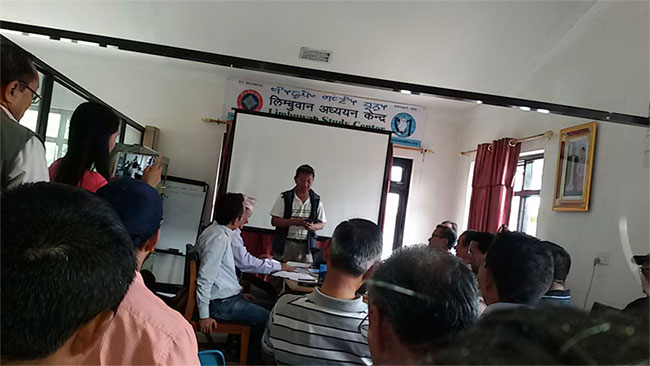KATHMANDU, Aug 13: Lumbuwan leaders and intellectuals have been sharply divided over the delineation of the proposed Limbuwan province.
Speaking at an interaction titled Limbuwan Movement: Yesterday, today and tomorrow, organized by Limbuwan Study Center (LSC) in Lalitpur on Friday, Professor Dr. Mahendra Lawoti said if the Limbuwan is delineated leaving out Jhapa, Morang and Sunsari, the Limbuwan province will be under the heel of Limbu leaders as it will have more Limbu representatives.
Lawoti said if the Limbuwan is federated including the nine districts east of Arun-Khosi River, the Limbu leaders will lose majority in the province. In the current Province-1 which consists of 14 districts, the presence of Limbs is put at only 10 percent which will come about 1.5 percent in the Central level.
He argued that if more federal states were created there will be fewer chances of conflict and fragmentation while the less number of federal sates is likely to lead to conflict and secession.
Developing Connectivity to Help Nepal Thrive


Meanwhile, he urged the Limbuan political parties to unite and pile pressure on the government to redraw the federal states.
Participating at the interaction program, Sanghiya Limbuwan Party, Nepal leader Lahang Chemjong said that the Limbuwan cannot be imagined without Jhapa, Morang and Sunsari. “They are the integral parts of the Limbuwan and Madhesi parties are simply playing a negative role against it.
Similarly, Prem Yekten, General Secretary of the Kirant Yakthung Chumlung, said the Limbuwan should join hands with pro-identity political parties including Madhes-centric parties and pile pressure on the government to get their demands addressed.
“Mathematical facts are more concrete and scientific rather than historicity when it comes to politics,” argued Yekten, “adding that the Limbuwan is weak at the base and cannot launch movement alone.” Meanwhile, he stressed for the 10-11-province federal model as submitted by the State Restructuring Committee of the first CA.

Similarly, Bishendra Chemjong, Vice Chairman of Sanghiya Limbuwan Rastriya Manch, said the state should be redrawn based on the Interim Constitution 2007 that had envisaged a 10-province federal model based on identity and resources.
Chaired by Professor Arjun Limbu, chairman of the LSC, over a dozen intellectuals and Limbuwan leaders had expressed their views on the topic in a one-day interaction program.
This interaction program has been organized at a time when the Limbuwan movement is on the wane, with the leaders divided over issues including delineation.
The party has been demanding for an autonomous Limbuwan state comprising nine districts of eastern region, based on historical background.



































